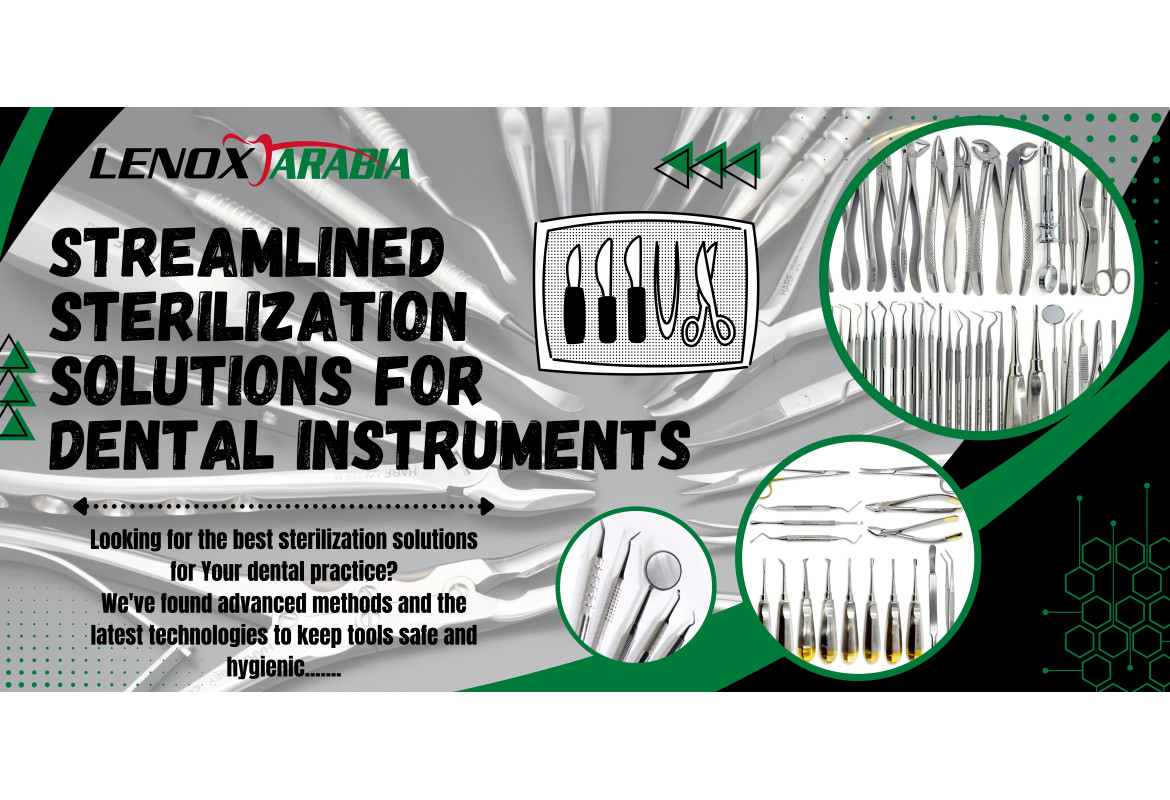
Streamlined Sterilization Solutions for Dental Instruments
Streamlined Sterilization Solutions for Dental Instruments: Ensuring Safety and Efficiency
Sterilization is the cornerstone of modern dental practices, vital for protecting patients and practitioners alike. Ensuring dental instruments are sterile not only upholds regulatory standards but also reinforces trust in patient care. With advancements in sterilization technology, dental clinics can now adopt more streamlined and efficient methods to maintain high hygiene standards.
The Importance of Sterilization in Dental Practices
Dental instruments come into direct contact with oral tissues and fluids, making sterilization critical to prevent cross-contamination and infections. Proper sterilization practices eliminate harmful pathogens, safeguarding both patient safety and clinical credibility. Furthermore, efficient sterilization methods enable practitioners to focus on delivering exceptional care without compromising on hygiene.
Challenges in Traditional Sterilization
Despite being essential, traditional sterilization processes often pose challenges to clinics, including:
- Time Constraints: Lengthy sterilization cycles can disrupt the workflow in busy practices.
- Instrument Longevity: Improper sterilization can lead to corrosion and reduce the lifespan of tools.
- Aerosol Generation: Certain procedures increase the risk of contamination, necessitating robust cleaning measures.
These challenges have led to the development of innovative sterilization solutions that address efficiency and instrument care.
Modern Sterilization Solutions for Efficiency
Advanced Cleaning Techniques:
- Ultrasonic cleaning systems remove debris effectively before sterilization.
- Pre-soaking solutions prevent dried contaminants and simplify cleaning.
Autoclaves:
- High-pressure steam sterilizers remain the gold standard for ensuring the complete elimination of bacteria, viruses, and spores. Modern autoclaves now feature rapid cycles for quicker processing.
Instrument Materials:
- Surgical-grade stainless steel and titanium instruments are designed to withstand multiple sterilization cycles without damage.
Compliance with Standards:
- Ensuring adherence to regulatory guidelines enhances patient safety and reduces risks during procedures.
Steps for Effective Sterilization Workflow
To optimize your sterilization process, follow these essential steps:
- Immediate Cleaning: Rinse instruments immediately after use to remove debris.
- Thorough Drying: Ensure instruments are dried properly before sterilization to prevent corrosion.
- Sterilization: Use appropriate sterilization cycles in autoclaves for complete microbial elimination.
- Storage: Place sterilized instruments in sealed, sterile pouches to maintain cleanliness until use.
Lenox Arabia: Delivering Precision and Safety
At Lenox Arabia, we recognize the pivotal role that sterilization plays in dental practices. Our sterilizable instruments are crafted from premium materials to ensure durability and compliance with modern hygiene standards. Whether it’s advanced tissue forceps, curettes, or surgical tools, our products are designed for rigorous use and efficient sterilization.
Conclusion
Streamlined sterilization is essential for delivering high-quality dental care. By adopting modern techniques and using sterilization-ready instruments, dental professionals can elevate patient safety while enhancing practice efficiency.
Explore Lenox Arabia’s range of sterilizable dental instruments to support your practice with reliable, precision-engineered tools crafted for safety and excellence.

